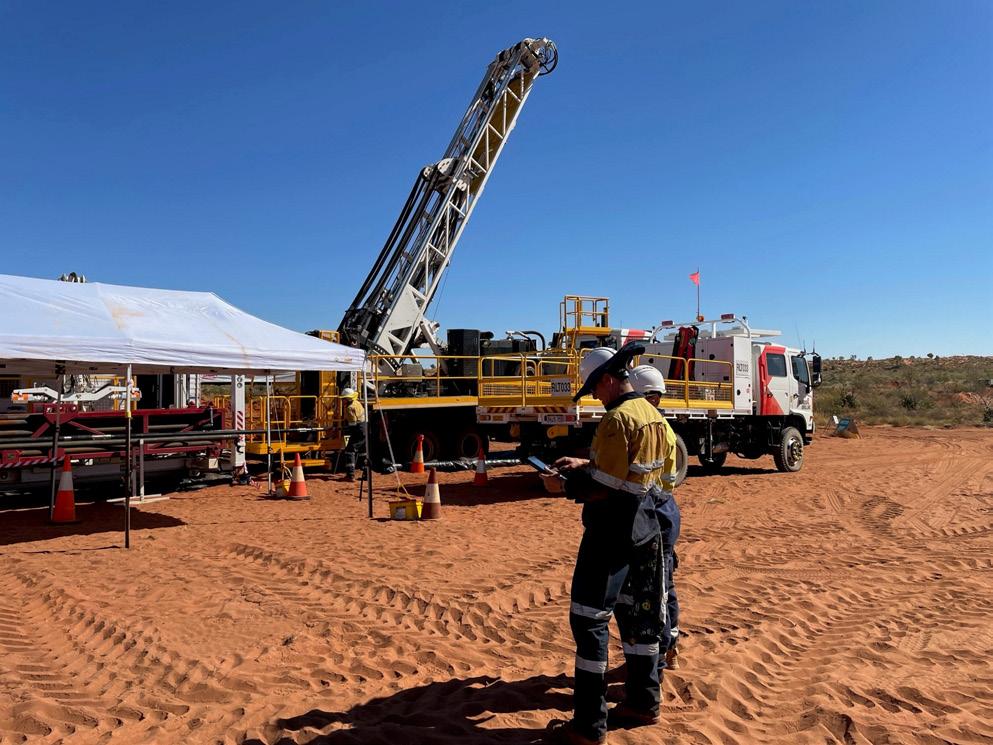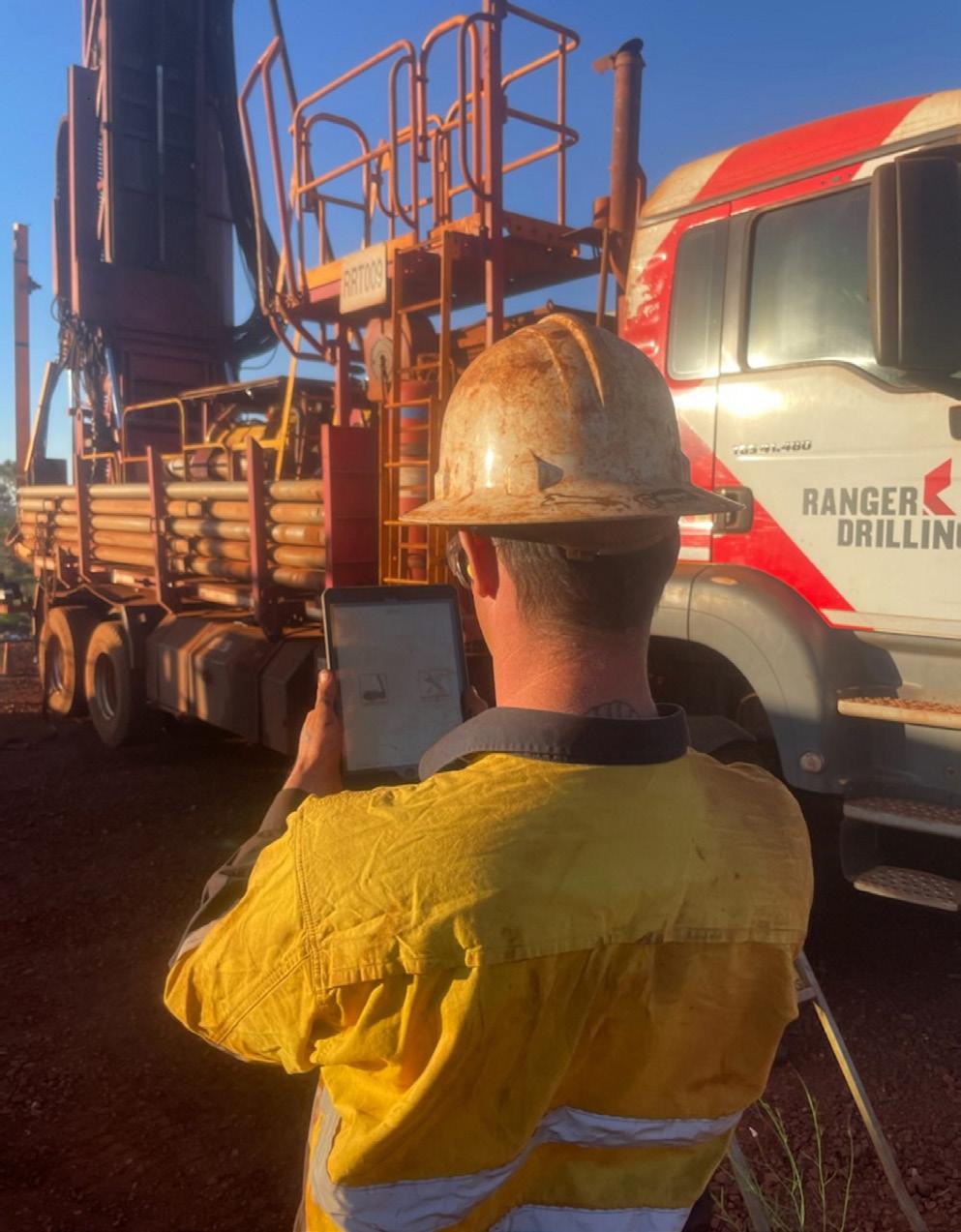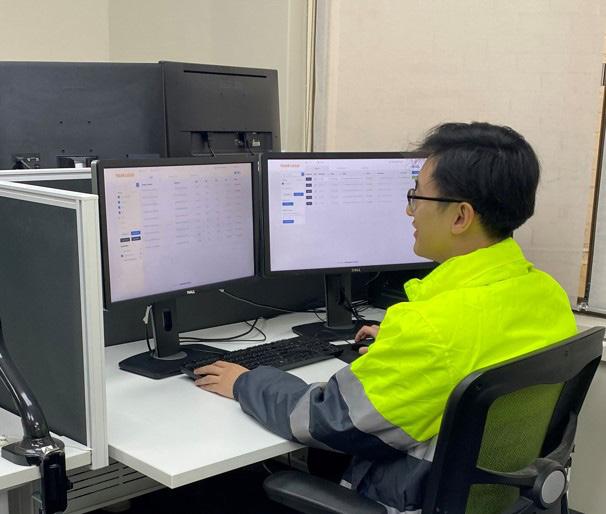
7 minute read
Transforming Daily Drill Reporting
Colleagues Matrixx, Australia and North America, considers how cloud-based platforms can help resource and drilling companies better communicate.
One of the industry’s longest standing and pervasive problems is companies working together using disparate systems that cannot communicate. The history of stalemates between resource companies and drillers, each beholden to their chosen business software, has left geologists and drill supervisors bridging the divide themselves through custom data exports, data manipulation, and replicate data entry in multiple systems – all of which is manual, and all of which sees experienced and expensive resources sitting behind a desk instead of being out in the field contributing value to the business.
The challenge of daily drill reports – a well-known source of frustration and data inefficiency
Despite the technological advancements driving efficiency gains and operational improvements across nearly every aspect of mining, data entry in the field remains a page out of the 1970s for some drillers. Many drilling companies are still completing their daily reporting on paper. These crumpled sheets are gathered up, reviewed, and then – best-case scenario – they are entered one-by-one into the driller’s software package. However, more often than not they live on in a multitude of unwieldy spreadsheets,

which are manually updated and manipulated to make sense of the data and passed back and forth in email chains between individuals, before finally being uploaded to shared data drives where version management and conflicting edits are everyday pain-points. This gives rise to a range of issues including inconsistency of collected data, delays in data processing, mistakes interpreting sometimes illegible hand-written reports, and of course the ever-present threat of human error.
Even as digital daily drill report (DDR) mobile applications emerge, drilling companies often seek a customised export template from mobile application providers enabling data exports according to each resource client’s specific requirements: a process that is both costly and time-consuming.
Resource companies load drilling data into their own geological or financial database. If not provided from a customised export template, this requires the drillers’ data to be manipulated into a bespoke format that is compatible for import, while creating a potential point of failure by populating unnoticed data compilation errors into the database – assuming the data makes it there at all.
A digital DDR alone is not the silver bullet it seems, bringing with it a new set of problems for those attempting to bring their operations into step with today’s technology. As early mobile phone users learned that each manufacturer had its own proprietary charging cable, the mining industry is struggling with siloed data-clouds created by individual mobile application vendors, each with its own sign-in, discrete dataset, and varied functionality. These clouds are not integrating with resource companies or each other, and, from a data-integrity perspective, are not offering significant gains on the triplicate books of years gone by.
To date, a resource company’s only resort for combatting data compilation inefficiencies has been to request all contracted drillers use the same mobile application, in order to standardise the data being submitted and facilitate the DDR data import into its internal systems. This practice means that drill crews need to enter daily reports twice, into two different systems: once, for the drilling company’s purposes; and a second time to meet the contractual and operational requirements of the resource company. This method is unsustainable – populating the same data in two independent, unconnected systems creates a divergence in the data which cannot be undone, and inevitably leads to conflicting records, undermining the veracity of the data. This ultimately makes end-to-end data comparability and timely invoicing virtually impossible.
These practices can be found on any drilling site to varying degrees. They can break the data chain-of-custody, as well as create instances of non-compliance when data is compiled and moved between systems.

Figure 1. Drilling companies who use the Matrixx Mobile application in the field are able to view and manage their drilling data in real time.
Figure 2. The Matrixx Mobile application is used by drillers in the field to capture and upload their daily drilling reports (DDR’s or PLOD’s).

The solution – DDR chain of custody
Digital and data software developer, Colleagues Matrixx, is tackling this problem with the release of MatrixXchange back in November 2021; a single sign-on, cloud-based viewing, approval, and reporting platform. Since arriving on the market, MatrixXchange has amassed the support of major resource companies and drillers alike, and has become a ‘go to’ link between resource and drilling companies.
MatrixXchange delivers a solution to the collaboration problem, automatically collating and standardising data formats from all DDR or progress log of drilling (PLOD) submissions, regardless of the number of drilling companies or the software system they use; giving resource companies a single, cohesive interface to manage
all daily drilling reports, and present that data to any other internal systems that need it.
In releasing this platform, the company is helping to solve the collaboration problem by providing an end-to-end solution, integrating directly from drilling companies’ data capture systems into resource company geological and/or financial databases, and any other systems using the drilling data. The platform is accessed securely, presenting all DDR submissions across all drilling contractors in one cohesive interface, where they can be reviewed for approval and analysed using integrated reports, all while negating data double-handling for drilling companies at the rig.
The platform tackles siloed data clouds by bringing all drilling data together in one place, regardless of the original mobile application that collected it. Its single-sign-on web platform means one login to see every submission, for every driller, for every project.
When a submission has been rejected or approved, notifications are automatically sent to relevant parties carrying the DDR’s status update along with, in the case of a rejection, any additional information the resource company provides. Drillers using Matrixx Mobile will also see the updated DDR status when they login to the Matrixx Portal. The approved DDR data seamlessly integrates into resource company corporate databases, eliminating compilation, data manipulation, CSV exports, and manual intervention. Enabling efficient collaboration and data transfer between companies, whilst also improving data quality and preserving the chain of custody of data from rig to database.
MatrixXchange alone does not fix the paper problem, but for the hold-out analogue drillers still using paper, it prevents the headaches, inefficiencies, and expense that usually follow the paper data once it hits a spreadsheet. The data from the driller can go straight into MatrixXchange; no more compiling, no more data modification, no more hassle.
Changing the game using technology
It is about working smarter, using state-of-the-art technology with field-to-office applications that ensures teams are making the most efficient use of their time.
MatrixXchange provides all data in a consistent format, regardless of the mobile application source. Resource companies no longer need to worry about data formatting and standards for contractors, as it will handle any DDR mobile application or CSV file drillers choose to use, eliminating hassle and failure points in the flow of data. This provides a chain of custody for drillers and resource companies, providing consistent and reliable data for geological databases and financial systems.
For drilling companies who choose to use Matrixx Mobile, they can record drilling activities in the field and use the online Matrixx Portal to manage their schedule of rates, invoicing, and timesheets. Drilling companies can generate invoices quickly and resource companies validate those invoices using the exact same data as the driller, meaning invoices are paid faster.
The extent of benefits for the resource company become clear after the drilling information has been integrated into a geological database, giving geologists valuable information about geological rock properties based on the drilling conditions and rig behaviour at the project drill site. Planned drill holes can be assigned through to all drilling companies without the need to email or create paper lists for drilling companies to follow on site.
The solution provides additional modules for reporting with robust data analytics and dashboard capabilities such as PowerBi. MatrixXchange is also not limited by the type of form or DDR and can collect data to integrate from multiple sources including reverse circulation, diamond drilling, hydro, geotechnical drilling, as well as environmental and earth moving equipment daily forms.
Conclusion
MatrixXchange delivers operational and economic benefits by streamlining workflows and increasing transparency across every aspect of the drilling process for both drilling and resource companies. It takes data from many separate sources, makes it available through a single online interface, and integrates that data with other systems.

Figure 3. Mining companies can view real time analytical data through MatrixXchange reporting dashboards.
Figure 4. Geologists approve or reject data drilling data from all disparate drillers systems from a single sign on in the office.











